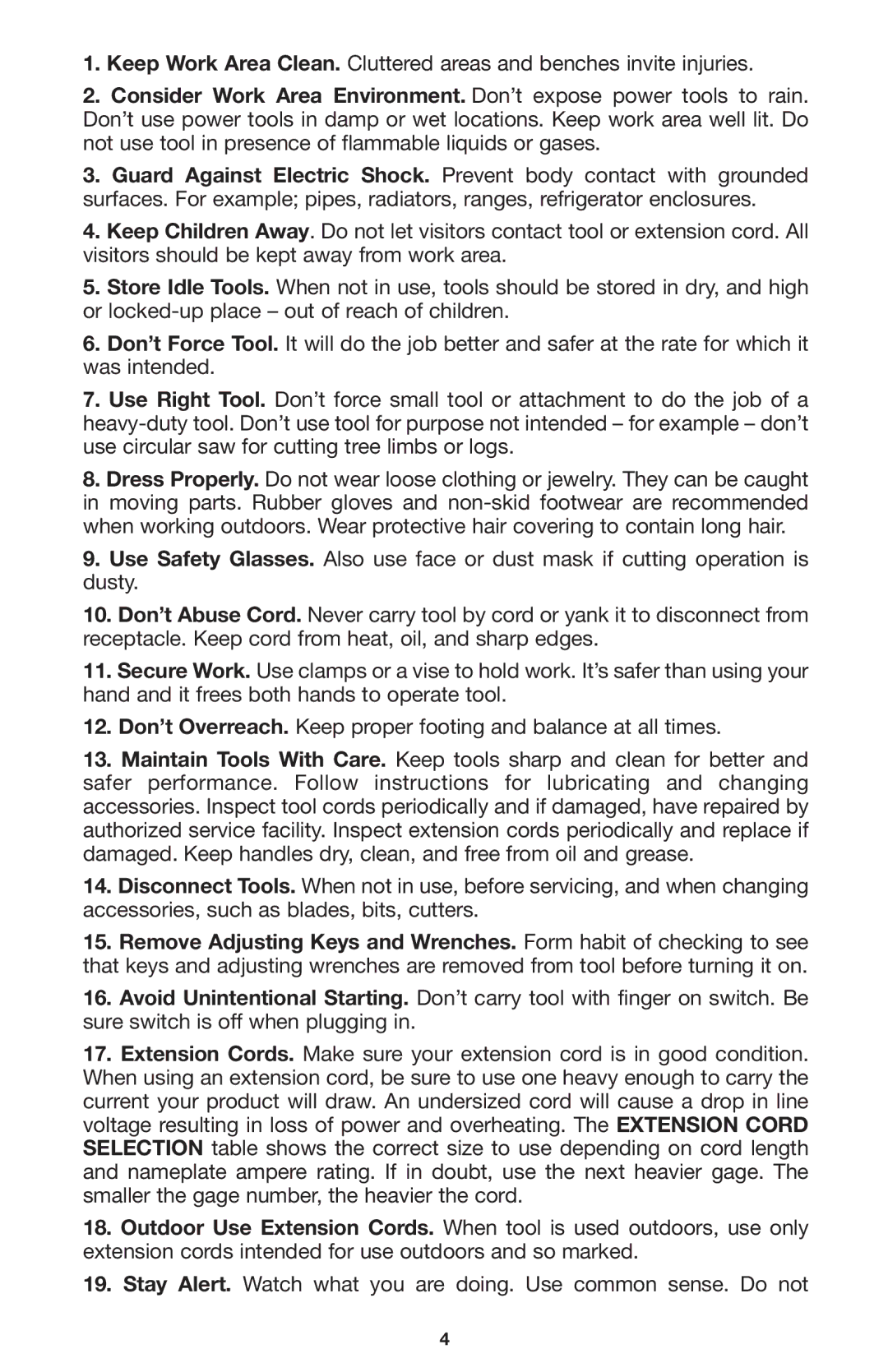100 specifications
The Porter-Cable 100 is a versatile and efficient tool designed for both amateur and professional woodworkers alike. Renowned for its reliability and robust performance, this tool has established a solid reputation in the woodworking community. Its compact design and lightweight structure make it highly portable, providing users with the flexibility to use it in various environments.One of the standout features of the Porter-Cable 100 is its powerful motor. This tool is equipped with a 1.5 HP motor that provides ample power for a wide range of applications, such as shaping, sanding, and finishing wood. The motor’s efficiency ensures that it operates smoothly, reducing the likelihood of stalls or overheating during heavy usage.
The Porter-Cable 100 employs a simple yet effective depth adjustment system, allowing users to make precise cuts and adjustments easily. This feature is crucial for achieving consistent results, particularly in detail work or when creating joints. The depth adjustment knob is accessible and easy to operate, enabling quick changes without interrupting the workflow.
Another impressive characteristic of the Porter-Cable 100 is its integrated dust collection system. Woodworking can generate considerable dust and debris, but this tool minimizes the mess with its built-in vacuum attachment. The dust collection feature enhances visibility while working and helps maintain a cleaner workspace, which is essential for safety and efficiency.
Additionally, the Porter-Cable 100 incorporates a dual speed option, giving users the versatility to switch between speeds based on the material they are working with. This capability is particularly beneficial when transitioning between soft and hard woods, as different densities require varied speeds for optimal results.
The tool's durable construction ensures longevity, making it a worthy investment for those who take their woodworking seriously. It features high-quality components and a comfortable grip that reduces fatigue during prolonged use.
In conclusion, the Porter-Cable 100 stands out with its powerful motor, depth adjustment system, integrated dust collection, dual speed settings, and durable design. Whether you are a hobbyist or a seasoned professional, this tool offers the features and reliability needed for a variety of woodworking projects. With its combination of power and practicality, the Porter-Cable 100 remains a popular choice among woodworkers looking to enhance their craft.
